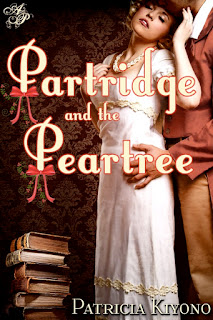“A merry Christmas, Bob! Said Scrooge, with an earnestness that could not be mistaken…I’ll raise your salary, and endeavour to assist your struggling family, and we will discuss your affairs this very afternoon, over a Christmas bowl of smoking bishop, Bob!…”
...so says the reformed Scrooge to Bob Cratchit at the end of Charles Dickens' A Christmas Carol, but did you ever wonder what Smoking Bishop was?
It's a warm mulled wine and port drink, sometimes known simply as 'Bishop', that was especially popular in Victorian times. It's exact origins are obscure - Jonathan Swift mentions it in a poem in the late 1600s - but the name seems to have arisen from when church dignitaries were served spiced wine during visits, from the shape of the traditional punch bowl it was served in, shaped like a Bishop's Mitre, or possibly even the colour of a Bishop's robes.
 | |
| Scrooge and Bob Cratchit sharing a glass of Smoking Bishop |
Smoking Archbisop - made with claret
Smoking Beadle - made with ginger wine and raisins
Smoking Cardinal - made with Champagne
Smoking Pope - made with burgundy
Here's an original 1836 recipe from 'Tales of the Table, Kitchen, and Larder’, By Dick Humelbergius Secundus:
+++
Glasses Of Smoking Bishop
RECEIPT, OR RECIPE, TO MAKE BISHOP.
Make several incisions into the rind of a lemon; stick cloves in these incisions, and roast the said lemon by the fire. Put small but equal quantities of cinnamon, mace, cloves, and allspice, and a race of ginger, into a saucepan, with half a pint of water; let it boil until it be reduced one half. Boil one bottle of port wine ; burn a portion of the spirit out of it, by applying a lighted taper to the saucepan which contains it. Put the roasted lemons and spice into the wine; stir it up well, and let it stand near the fire ten minutes. Rub a few nobs of sugar on the rind of a lemon; put the sugar into a bowl or jug, with the juice of half a lemon, (not roasted) pour the wine upon it, sweeten it to your taste, and serve it up with the lemon and spice floating in it.Oranges, although not used in bishop, at Oxford, are, as will appear by the following lines, written by Swift [in the late 1600s] sometimes introduced into that beverage :—
“Fine oranges,
Well roasted, with sugar and wine in a cup,
They’ll make a sweet bishop when gentlefolks sup.”
When this is put upon the table, there are few, we imagine, who would be found to say, “Nolo episcopari,” not even the Bishop of London himself.
+++
Eliza Acton's 1845 recipe from her Modern Cookery is similar but she recommends using oranges...
by applying a lighted paper to the saucepan.
Put the roasted lemons and spice into the wine; stir it up well, and let it stand near the fire ten minutes. Rub a few knobs of sugar on the rind of a lemon, put the sugar into a bowl or jug, with the juice of half a lemon (not roasted), pour the wine into it, grate in some nutmeg, sweeten it to your taste, and serve it up with the lemon and spice floating in it.”
* A Seville orange stuck with cloves, to many tastes imparts a finer flavour than the lemon.
 | |
| Mitre-shaped punchbowl, from Eliza Acton's Modern Cookery |
And here's a modern version which will serve around 10 people - great for entertaining!
Christmas Cards
Did you know that the first Christmas cards were sent by Sir Henry Cole, director of the Victoria and Albert Museum, in 1843. He wanted to remind his friends that they should give to charity at Christmas but didn't have the time to sit down and write letters to them all, so he commissioned painter John Collcott Horsley to create a design that he could have printed.
Now, in the UK, we send more than 700 million Christmas cards a year!
 | |
| Sir Henry Cole's first Christmas card |
 |
| Christmas Card, printed in Germany and sent from Pittsburg, Pennsylvania to Beaver County, PA in 1909 |
 |
| Card posted in Detroit , Michigan to an address in
Fort Street, Detroit in Dec 1911. Another card that was printed in
Germany |
(early 20th century card images courtesy of Lindsay/C19)
And that's it - no time for more posts in 2012 as I have to get on with making some Smoking Bishop! :D
Merry Christmas to all and a Happy and Healthy 2013!


.jpg)


